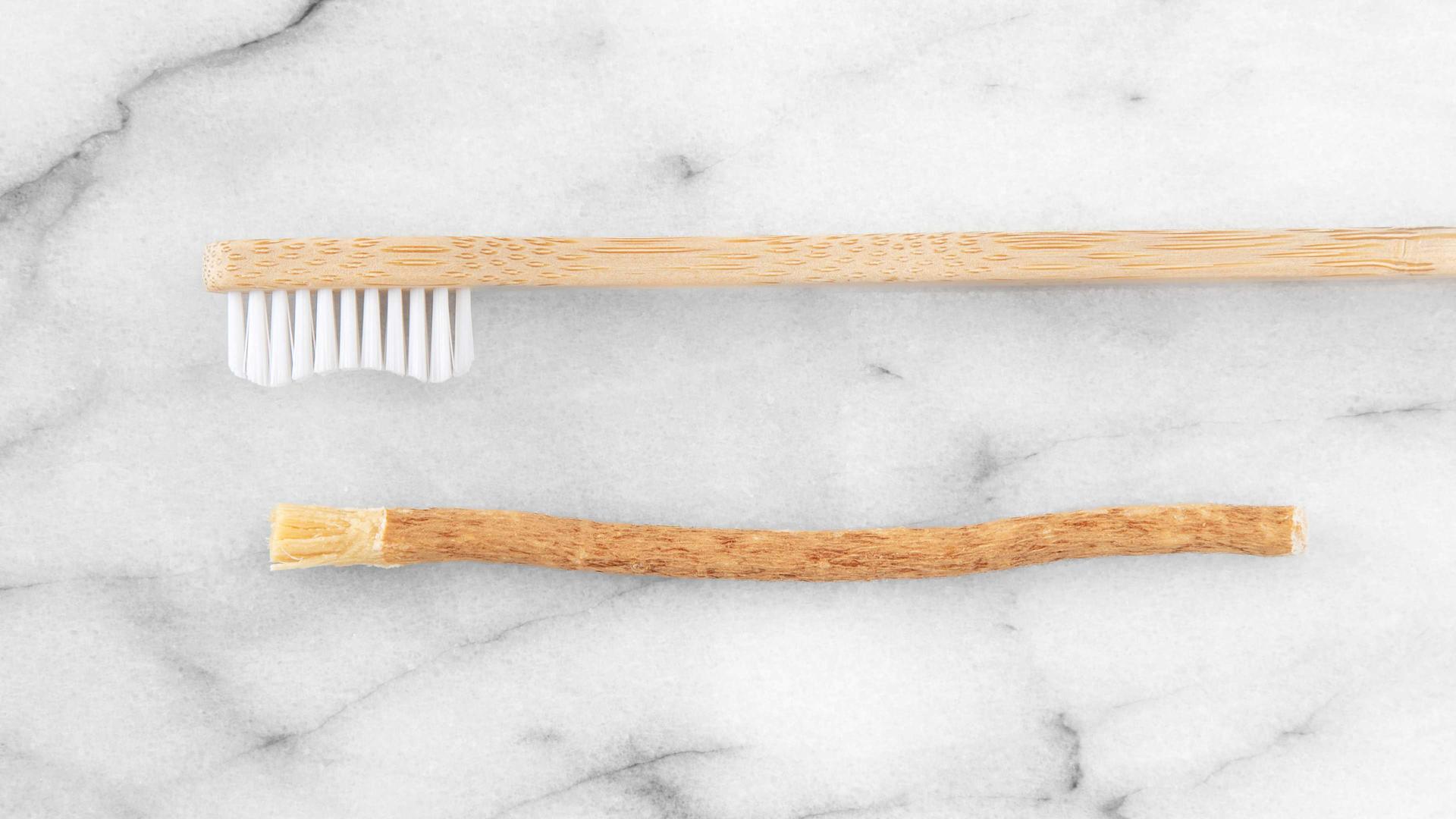
Food waste
Saving food and helping people
A visit to "Tischlein deck dich": members of the FMC Executive Board support the team on site.
navigation

Migros Industrie
From chewed branches and bone powder to today’s nylon toothbrushes. The long history of dental care.
Branches of the arak tree – also known today as the toothbrush tree – were used for dental care in Ancient Egypt as early as the 4th century BC. People would take a twig and chew it until it frayed at one end. It was used as a kind of brush for cleaning teeth. The wood actually even contained natural fluorides, making it a natural toothpaste. This form of dental hygiene is still practised today in some Arab and African countries and is called Miswak or Siwak.
Several recipes for tooth powder date back to ancient Rome. One of them was recorded in the book “Naturalis historia” and requires a mixture of bones, horn or seashells in powder form, which are then burnt to ashes. This mixture was used as an abrasive substance to remove sticky residues from the teeth. To improve the taste, the author Pliny the Elder recommended addingbicarbonate of soda and myrrh.
In addition to a toothbrush, physicians in Ancient Egypt also sought a recipe to keep their teeth white and healthy. Historians have found surviving instructions for a type of toothpaste dating back to the 4th century. The text is written in ancient Greek and reads: “1 part rock salt, 2 parts pennyroyal, 1 part iris and 20 peppercorns.” This paste was then rubbed onto the teeth and gums with a cloth, finger or tuft of grass.
The first toothbrush was found in China. It was made using pig bristles between 619 and 907 AD, during the time of the Tang Dynasty.
During the Middle Ages, oral hygiene was somewhat overlooked, especially among the lower classes, although white teeth were still considered the ideal of beauty. A recommendation by the physician and medical writer Bartholomew of Salerno was passed down from the 12th century:
“To whiten your teeth, take the root of the Starwort plant, scrape off the outer layer and rub it firmly on your teeth and they will turn white. If this does not work, burn a pumice stone to powder and take a nutshell, dry it and rub both firmly on the teeth to make them beautiful and white so they look like white marble.”
A tooth-cleaning solution made from honey, salt and rye flour was used in England in the 14th and 15th centuries.
White teeth weren’t always an ideal of beauty. In the 16th century, it was considered fashionable in the UK to have your teeth dyed black. This was inspired by Queen Elizabeth I whose teeth were completely rotten (i.e. black) due to her high sugar intake. At that time, sugar arrived in Europe in huge quantities from cane sugar plantations overseas.

During the 17th century, French doctors agreed with the Sun King Louis XIV that his teeth should be extracted from his royal mouth while they were still healthy. The king’s teeth were extracted without anaesthesia, breaking part of his palate. From that point on, the King had great difficulty eating and drinking – but the most important thing was that his teeth weren’t diseased.
From the mid-19th century, soap was used to clean teeth. To get rid of the soapy taste, peppermint, menthol, but also sugar and honey were added.
A dentist from New Orleans invented dental floss in the 19th century. It was originally made of cotton.
In the middle of the 19th century, the Englishman Dr Washington Sheffield invented an early form of modern toothpaste. He used glycerine to mix the tooth powder into a paste for the first time.
In 1873, the company Colgate sold the first mass-produced toothpaste in a jar. Most people still used their own home-made toothpastes though.
Experiments using various types of animal hair were carried out for a long time in the hope of finding the perfect toothbrush. Nylon wasn’t invented until the 1950s, but became the perfect product for dental hygiene. However, this new type of brush wasn’t exactly cheap, as nylon could not be produced on an industrial scale to begin with.
The electric toothbrush was invented in the USA back in 1939. However, they only became popular during the 1960s when they were produced industrially.
During the 20th century, the market developed more and more toothpastes to meet different customer needs – for whitening teeth, to combat gum disease or for sensitive teeth. Migros launched its own brand Candida in 1949.
Even in the new millennium, the journey continues. Today, there are electric toothbrushes with ultrasound technology, pressure sensors or Bluetooth connections to an app that evaluates the cleaning process.
Explore new insights and stories relating to Migros, our products and the people behind them.